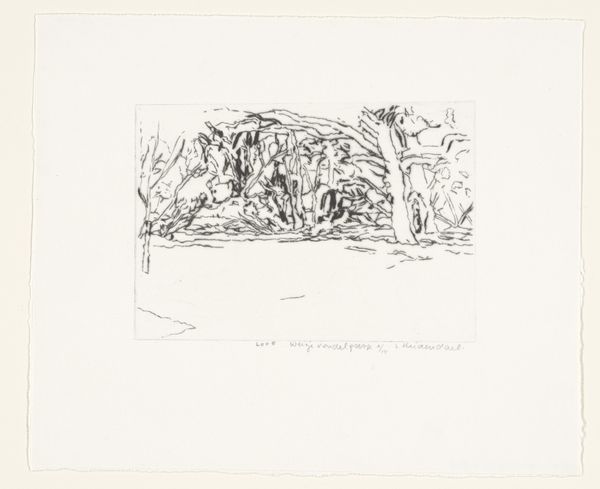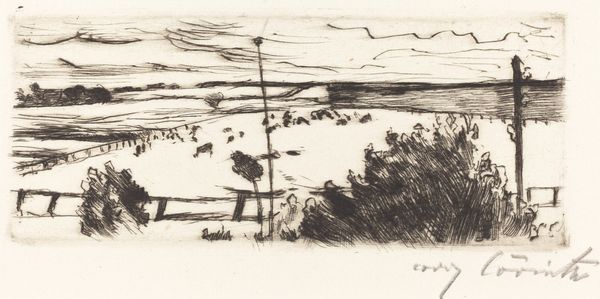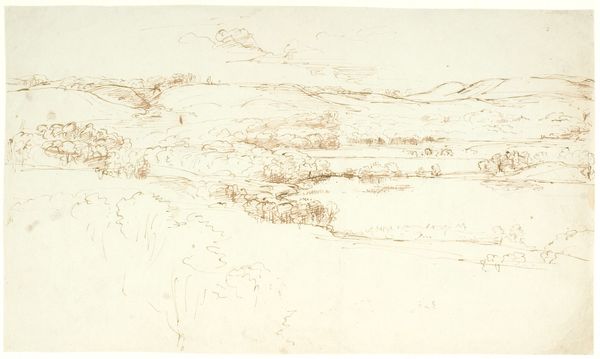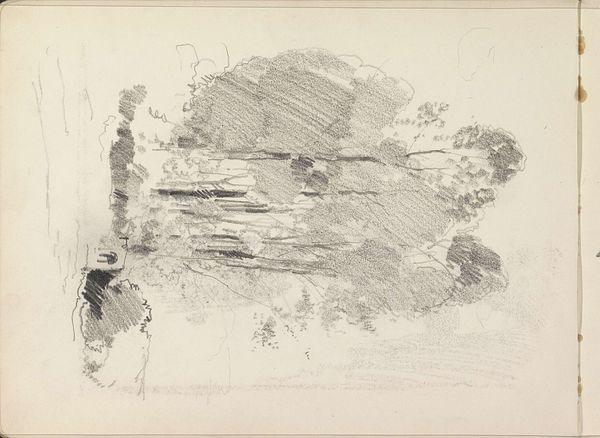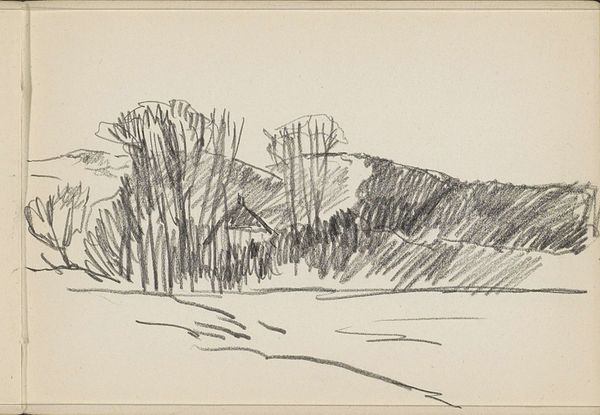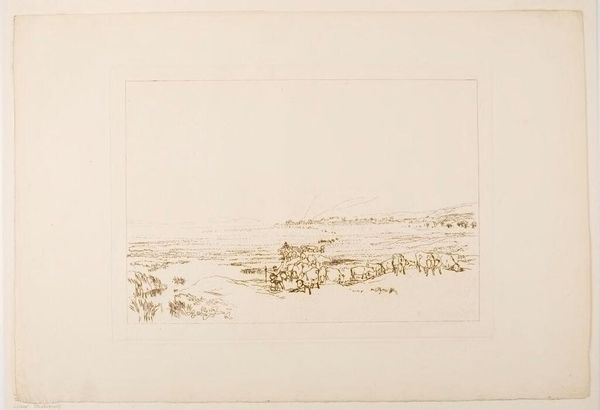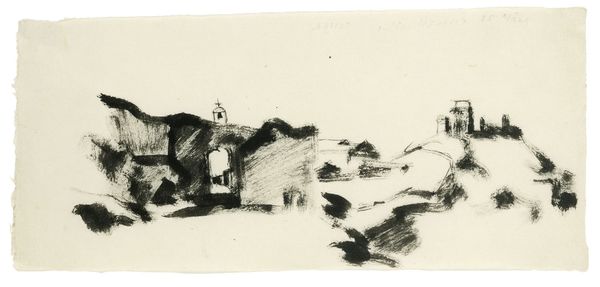
drawing, print, paper, engraving
#
drawing
# print
#
landscape
#
paper
#
engraving
Dimensions: 45 × 103 mm (image); 130 × 178 mm (sheet)
Copyright: Public Domain
Curator: Auguste-Louis Lepère's print, possibly from 1908, is called "Carrefour de l'Epine." Currently, it resides here at the Art Institute of Chicago. The medium is engraving on paper. Editor: There's a desolate quality to this landscape, wouldn't you say? The barren trees and almost ghostly light evoke a sense of abandonment. Curator: Absolutely. Lepère utilizes stark lines and careful cross-hatching to establish a rigorous contrast. Notice how the composition hinges on the fallen tree trunk, drawing the eye, guiding it into the pictorial space? Editor: Right, but what about the social commentary lurking here? The locomotive off to the side tells us about industry encroaching on nature, altering rural ways of life, forcing people from the land. This piece critiques capitalist exploitation. Curator: A valid point. Still, the artist's skill is remarkable: observe how the line weight varies, creating an impression of depth. The engraving technique gives this rural setting such a stark, almost theatrical presentation. Editor: The print raises questions, of course, regarding ecological transformation in early 20th-century France. Rural life was changing due to railways and economic pressures, so the quiet solitude we see could signal alienation, or perhaps resistance. Curator: Resistance perhaps, though the network of engraved lines functions in tandem, forming spatial relationships in their stark reality, each line performing as necessary within the framework, almost like a mathematical construction. The artist manages to merge industry and decay so elegantly, visually. Editor: We must ask: to whom are these landscapes accessible, and who dictates which histories get represented? Curator: It seems that what you observe can extend beyond formal construction to offer crucial viewpoints about the artwork. Editor: And by examining the historical currents and politics of identity around it, one finds depth in form.
Comments
No comments
Be the first to comment and join the conversation on the ultimate creative platform.

